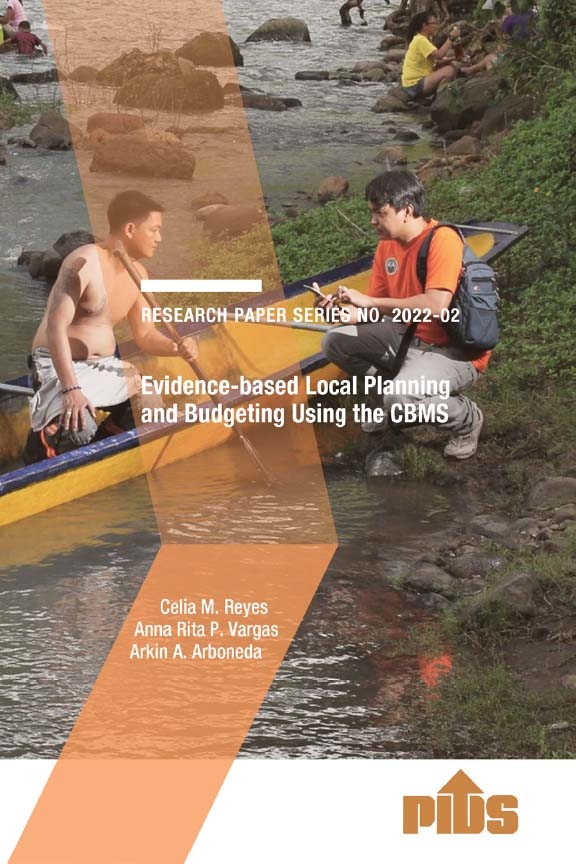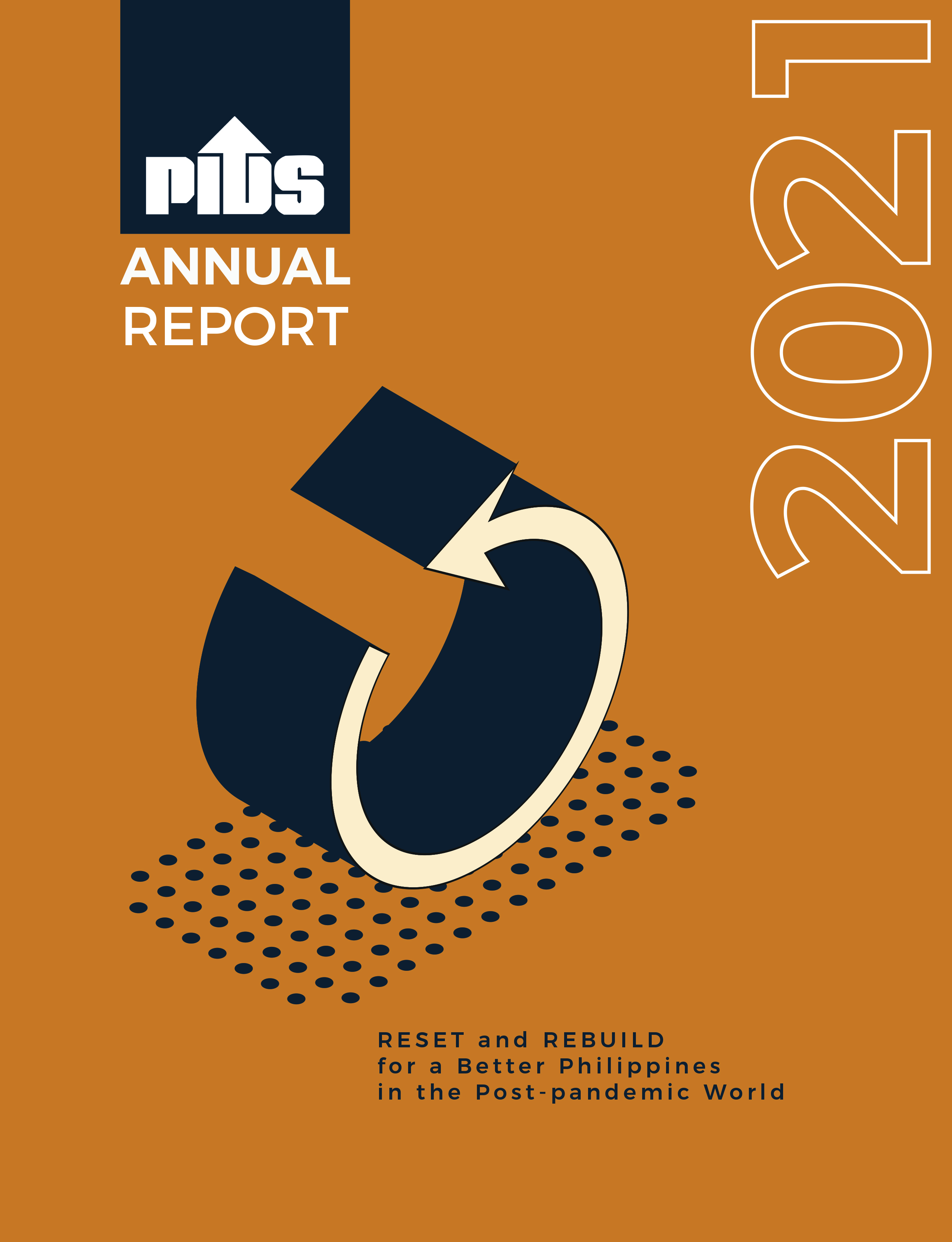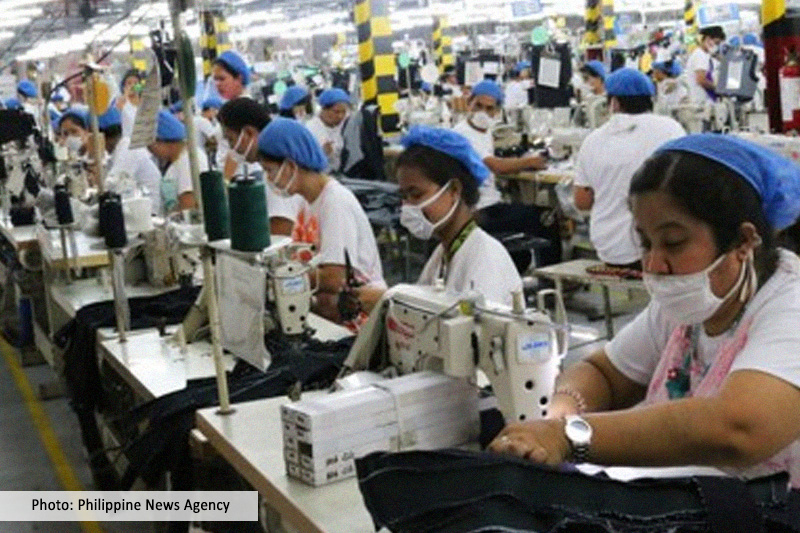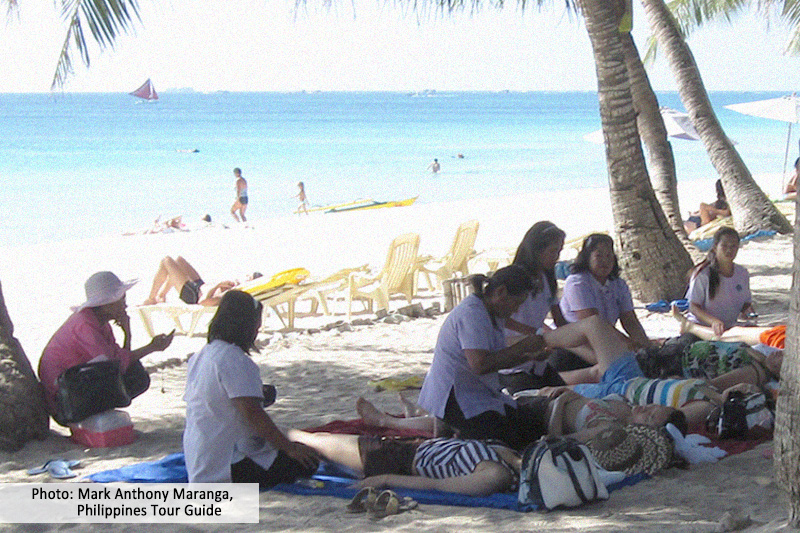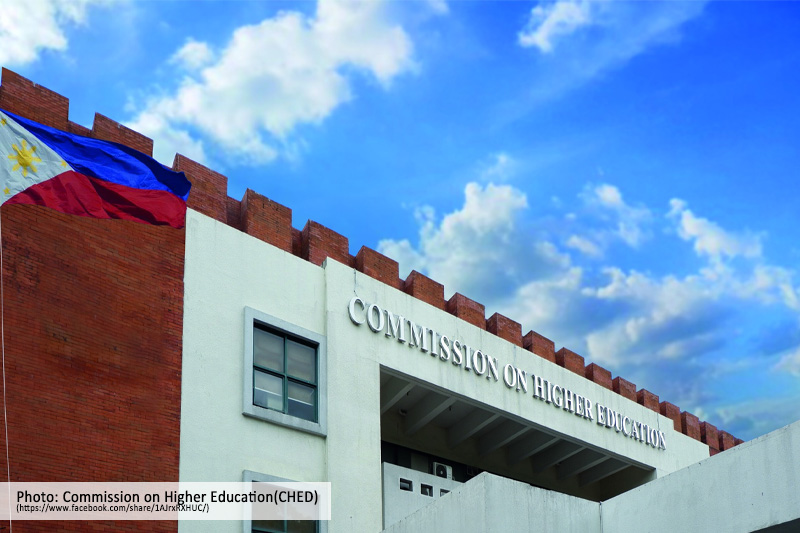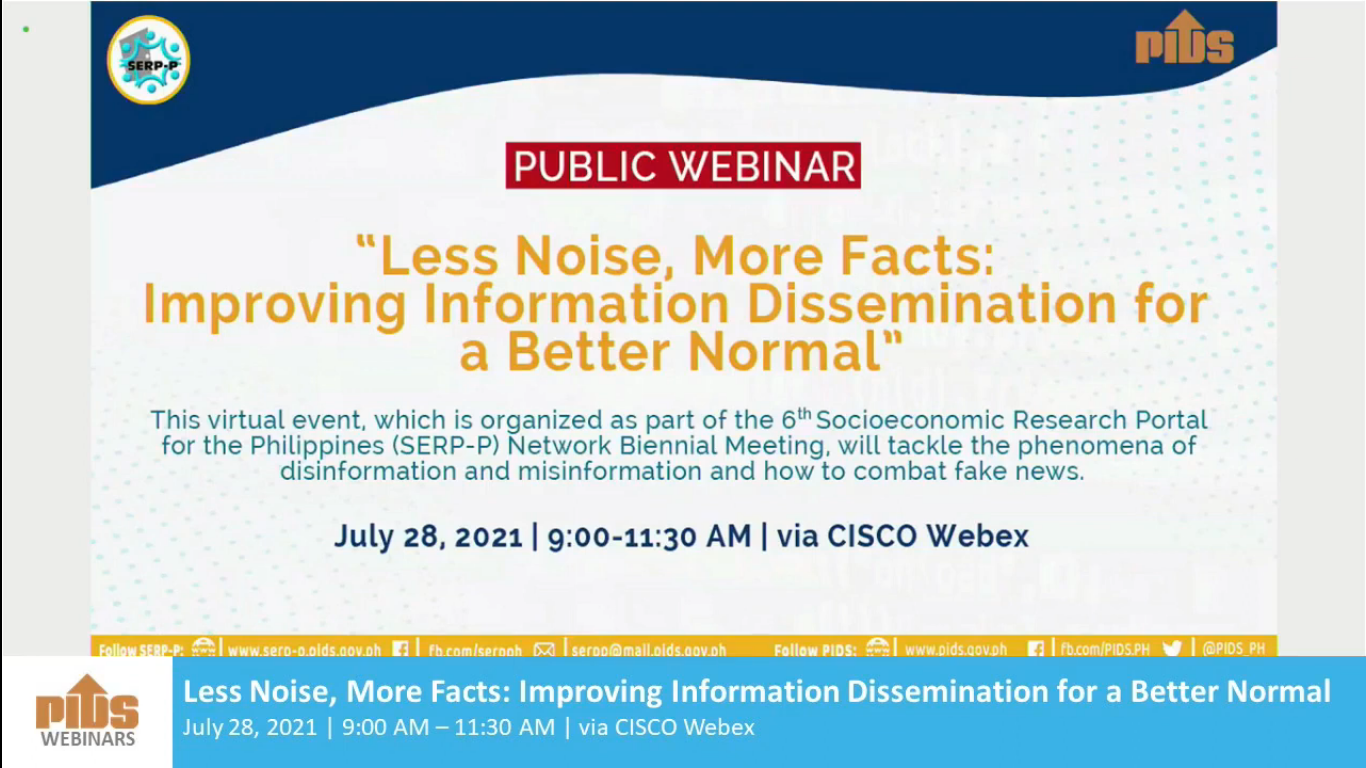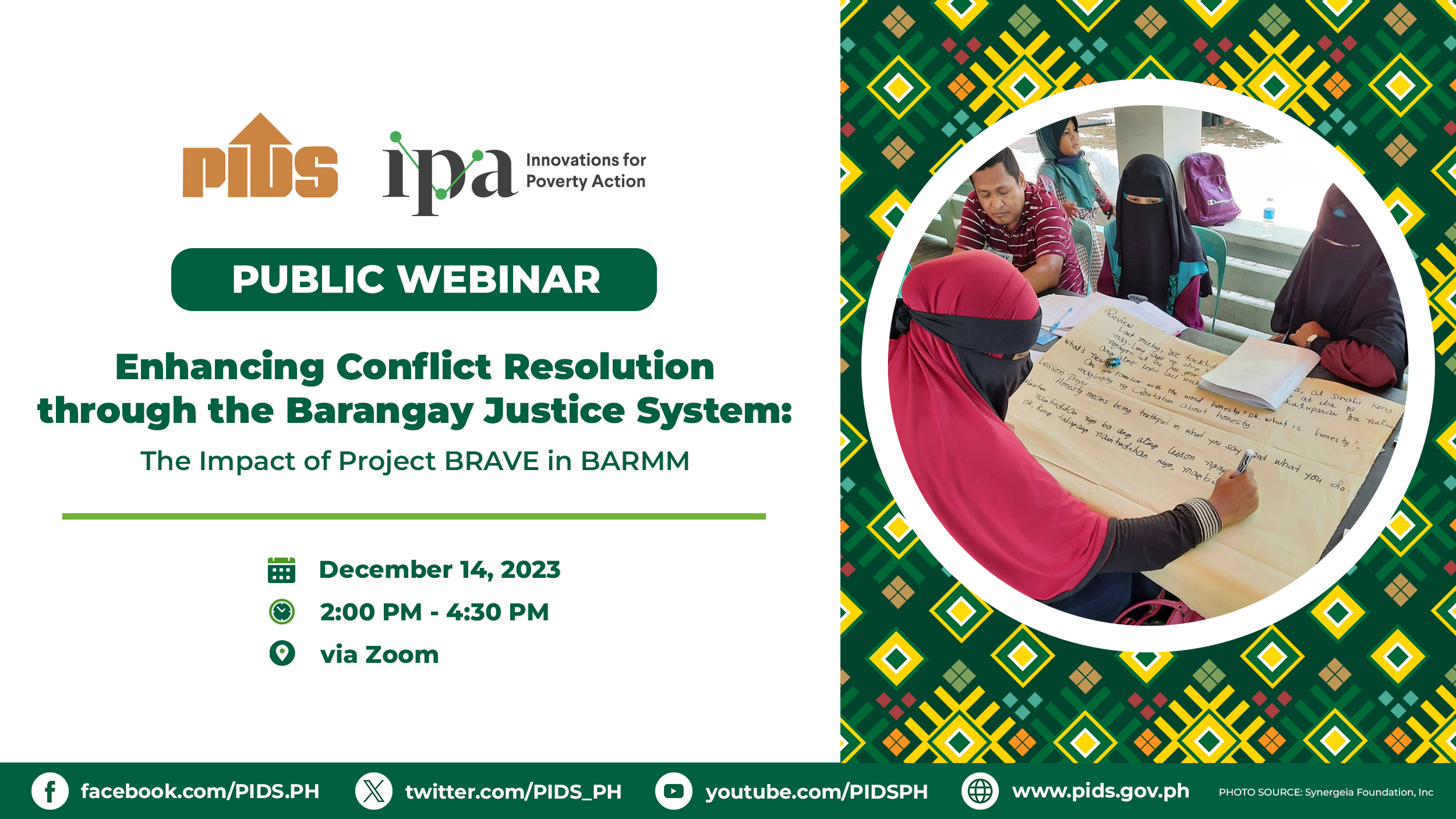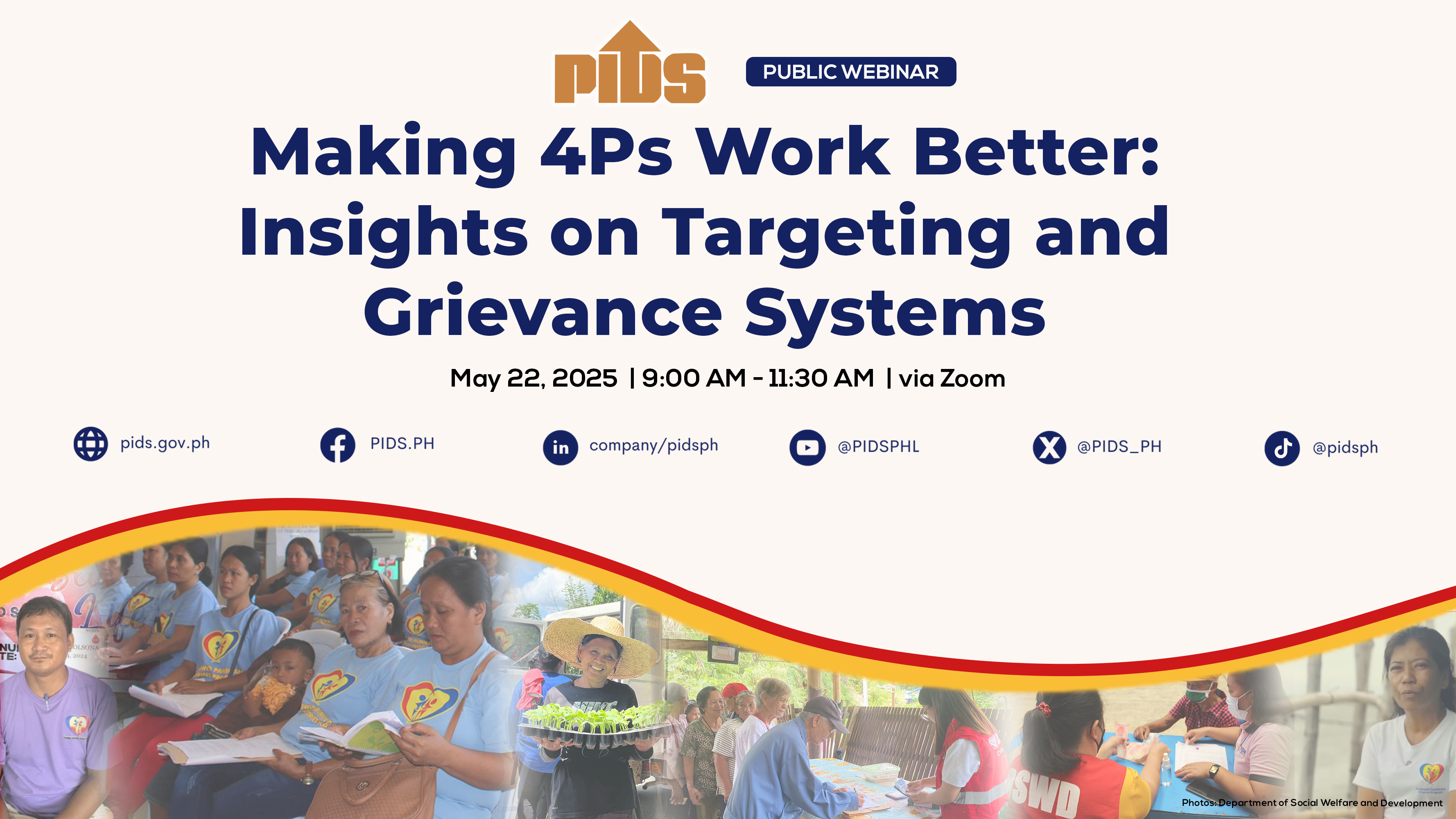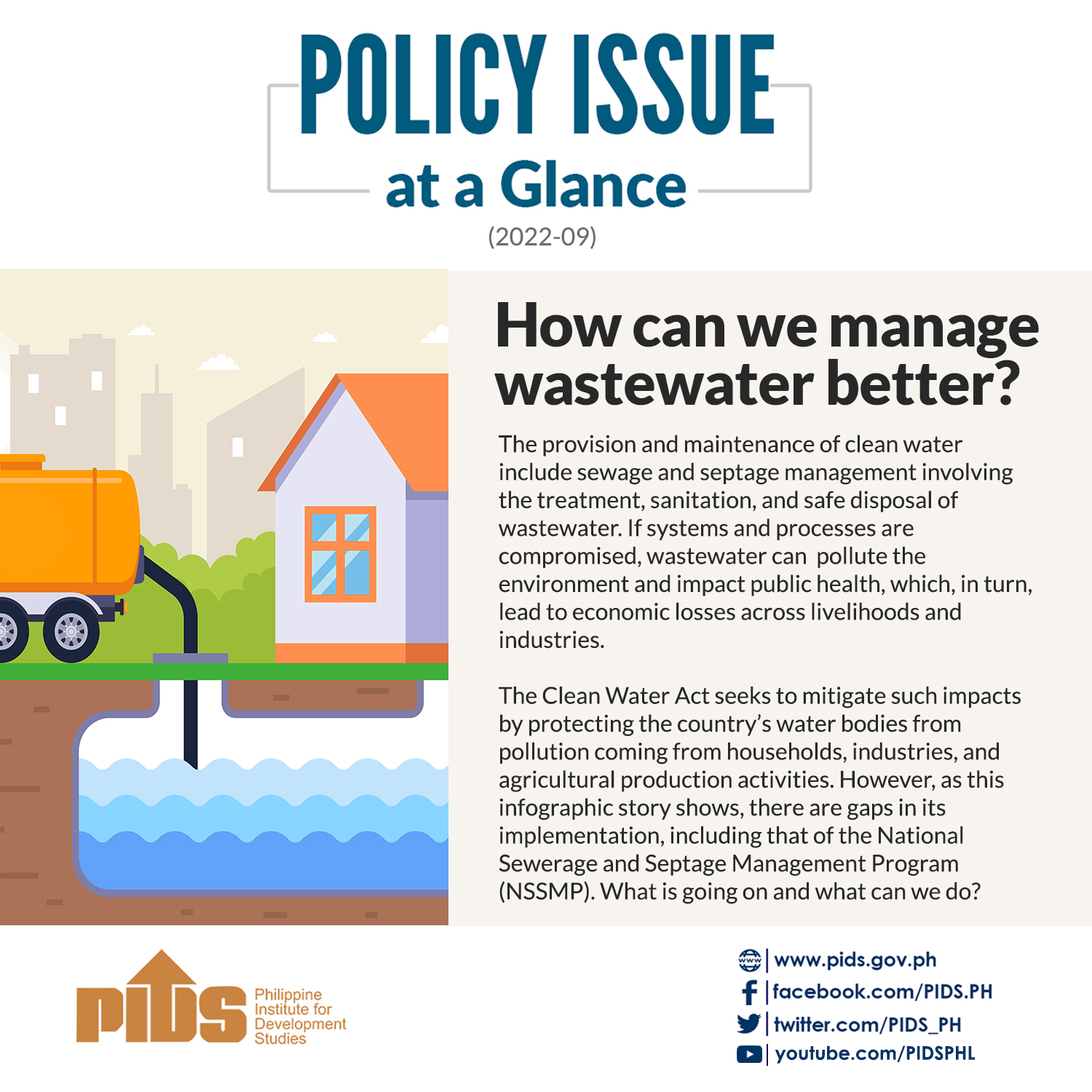MANILA, Philippines -- Bottom Up Budgeting has been the buzzword of the campaign of administration standard bearer Manuel Roxas II and his running mate, Leni Robredo.
So enamored is Roxas, a former Interior secretary, with the BUB concept that he has upped the ante, promising to expand it into “BUB Pa More” with P1 billion set aside from the national budget -- or roughly P1,000 for each of the 100 million Filipinos -- for services and facilities in cities, towns, and down to the barangay should he become the next president.
But to the camp of Vice President Jejomar Binay, the presidential bet of the United Nationalist Alliance, BUB is nothing but “legalized vote-buying” or, as his spokesman Mon Ilagan spells it out, “Bribe Ur Barangay” or “Buy Ur Barangay.”
It is worth noting, of course, that Binay himself has been bombarded with a barrage of corruption allegations.
But Leonor Birones, lead convenor of budget watchdog Social Watch Philippines and a former National Treasurer, shares the same observation, noting that “BUB funds are (a) direct remittance from the national government.”
Thus, “if this (BUB) happens during an election year, you cannot say that these are pure and virgin funds coming from national government to the local government.”
Briones, who teaches at the University of the Philippines, said the BUB’s objective could even “exacerbate national control over local government during elections” instead of loosening it up towards decentralization.
If Roxas wins, will the P100 billion allocation for BUB Pa More be feasible? With funds pouring in, can local governments and civil society groups handle the program’s implementation?
Will it have the promised impact on communities in terms of services and facilities form the government? How can it be insulated from politics? And does BUB promote decentralization or tighten fiscal centralization?
The BUB process
As an alternative to traditional top-down budgeting, the Aquino administration introduced the BUB in 2012 in time for the preparation of the 2013 National Expenditure Program.
Budget Secretary Florencio Abad called it a mechanism for “transparency and participation” as it allows people to directly participate in planning, budgeting and monitoring implementation.
The process gives civil society organizations equal footing with local government units identifying and planning projects needed by communities.
The National Anti Poverty Commission was tapped to put in place an empowerment program for CSOs and enable them to engage with LGUs.
The process calls for municipal local government units to prepare a Local Poverty Reduction Action Plan and, based on a menu, identify the most urgent anti-poverty priority projects to be funded by the national government.
The Department of Interior and Local Government was made the lead agency for the program, since it is in charge of local government units, with other national government agencies tapped to implement the identified projects.
Increasing allocation
The BUB is essentially an additional source of funds for LGUs, which are given P700 times the number of residents, tallied using the small poverty area estimates based on the Family Income and Expenditure Survey and Census data.
Thus, towns and cities with more poor residents receive larger BUB allocations.
However, the grant may not be less than P15 million nor more than P50 million per LGU. The BUB also requires LGUs to provide a cash counterpart.
For 2013, the government identified 609 poor municipalities to be covered by the program, which was allotted a budget of P13 billion. There were 10,600 projects implemented in that year.
For 2014, as the number of covered municipalities increased to 1,233 towns and cities, the budget allocation doubled to P26.2 billion for 23,846 projects.
For 2015, the BUB budget was P21 billion covering 14,638 projects in all towns and cities across the country.
For 2016, 14,325 local poverty reduction projects have been allocated P24.7 billion.
Abad said BUB will be expanded in 2017 to cover all 42,036 barangay nationwide.
BUB Pa More
Here is how Roxas pitches the BUB.
“Ang bilang ng Pilipino ngayon, 100 million na tao. Nakita ko, pinag-aralan ko, kinalkula ko, hinanap ko ang pera sa budget, at nakita ko na, nasagot ko na itong lahat (There are now 100 million Filipinos. I saw and studied it, calculating and looking for money in the budget, and I have found the answer to it all.). One hundred million people times P1,000 is P100 billion. 'Yang halagang 'yan, kukunin natin sabudget 'yang P100 billion na 'yan, at ipapamahagi natin 'yan sa BUB process sa lahat ng bayan sa ating bansa (That amount, the P100 billion, will be taken from the budget and we will distribute that through the BUB process to all municipalities in the country),” he said.
Roxas’ new formula not only increases the grant per resident from P700 to P1,000, but makes the program available to all, not just the poorest.
NAPC lead convenor Joel Rocamora says it can even be expanded further. “Mar is saying P100 billion. But if you ask Butch (Abad), he said government can fund BUB even up to P200 billion.”
ldquo;What the Aquino administration really wants is to push as much power, activity and money down to the grassroots, and the BUB is a tool for doing that,” Rocamore said.
Before the BUB, he said, people had no say about what projects were brought to their communities. “Now, it’s the people who choose which projects will benefit them. We are empowering the local government by virtue of giving them the money over which they can decide how to use that money,” he said.
“It’s not just money of national government going down to the local government units; it’s really the local government units gaining greater control over the money of national government agencies,” Rocamora stressed.
Decentralization or centralization?
However, Briones noted conflicting policies between the BUB and the Aquino administration’s other cornerstone anti-poverty program, the Conditional Cash Transfer.
“One major concept, which is clearly enshrined in the Local Government Code and in the Constitution is that local governments have to be decentralized and fiscally autonomous,” she said. “Now you have this policy of BUB, where the national government directly gives the municipalities funds. While we intone fiscal autonomy, what we are really doing it fiscal centralization.”
She noted that in the US and Canada, which also give grants to their poor, this is done through a calibrated mechanism.
For example, she said, Canada gives grants to indigenous peoples so they can catch up, but will not give grants to Montreal and other large cities.
“What is disturbing is that BUB is now for everybody when it's supposed to be for the poor municipalities,” she said.
“This means that one, there is a lack of trust for the local government system, which is supposed to raise its own money; and secondly, if this happens during election time, then you are really tightening control over local governments because you make promises to them about certain funds and projects,” she explained.
Even in the United Nations, Briones said there is growing concern about the condition of the Three Ds in every nation -- Democracy, Decentralization, Development.
The Philippines, she observed, is still a long way from achieving decentralization.
“We have it by law, but by fiscal decisions, what we have is fiscal centralization because money is controlled by the national government,” she said.
For instance, of the P3-trillion budget for 2016, what local government units will receive directly is only P428.6 billion or around 14 percent, with other funds needing to be negotiated with the Department of Budget and Management and the president.
“You cannot be having decentralization and fiscal centralization at the same time. And if you are having fiscal centralization, you cannot be having democracy. And if you don't have democracy, then you can't have development,” Briones said.
BUB = Roxas?
While the BUB is being touted as an anti-poverty program, Briones said it cannot be denied that it was put in place in anticipation of this year’s elections. When the BUB budget doubled from 2013 to 2014, it was placed directly under the DILG, then headed by Roxas.
“You have somebody who is DILG secretary and at the same time, presidential aspirant. How can you separate that?” she said. “Who will say that BUB is not Mar’s and who will not say that Mar is a presidential candidate?”
The administration may say Roxas was implementing the BUB as DILG secretary and that the funds used were legitimate because they were in the budget.
But Briones said this was what the International Monetary Fund, in a paper, found problematic.
“The IMF findings is that all these budgets are legitimate because they are covered by law, but it doesn’t deny the fact that it is political because you have the DILG secretary, who himself is the president of the Liberal Party,” she said.
Rocamora said the BUB’s impact on the administration candidates was never a consideration during the program’s inception. “Policies and programs evolve, they are developed, but their impact to elections was not among the considerations,” he said.
He also said that the realization of a decentralized government was the ultimate goal, but that this could only be attained with small steps like the BUB.
“The other thing that critics don’t understand is a lot of the money (allocated for BUB) is really the money of national government agencies,” he said. “So, it’s not just money of national government going down to the local government units, it’s really the local governments gaining greater control of the money of national government agencies, and madugong laban ito kasi sanay iyong mga ahensya na nagsasabi kung ano ang gagawin (it is a bloody fight because these agencies are used to saying what needs to be done). Now that is taken out of their hands,” Rocamora said.
Status of projects
In the fishing village of Sta. Clara in Batangas City, about a dozen new motorized banca were lined along the shore.
Reynaldo Bartolome pointed to one of the boats, which he said he received from the BUB project.
“We attended several meetings and we told the mayor that we need banca. Now, we have them,” he said.
Bartolome said the boats are not only used for fishing but for patrolling the seas against unauthorized fishing.
At least 1,590 local government units have participated in the BUB program since 2013. There were a total of 42,221 BuB projects reported in the Open BUB Portal. Of this number, 13,712 projects have been completed as of December 1, 2015 (exclusive of dropped projects that were replaced, split or merged).
For this year, 14,325 local poverty reduction projects have been allocated P24.7 billion. This is an increase from P8 billion in 2013 for projects identified in 595 cities and municipalities, according to Budget Secretary Florencio Abad.
The BUB has been recognized as one of five Best Practices in Fiscal Transparency from around the world during the Open Government Partnership summit in Mexico City last November. In their declaration, GIFT noted that “in 2015, 1,514 cities and municipalities (92 percent of all in the country) had joined the program and it has so much demand it would be difficult for future governments to discontinue.”
The Philippines was also granted the Gold Open Government Award for BUB in the inaugural OGP Awards at the United Nations Head Quarters in New York City in September 2014.
Challenges
Rocamora acknowledged that challenged remain in implementing the BUB.
“If we talk about the details, there are two steps forward and one step backward. But by and large, simply by being able to push that amount of money to municipal governments is already a measure of success,” he said.
Marie Labajo, one of the NAPC’s undersecretaries, noted the “struggle” between CSOs and LGUs in determining the projects. “There’s resistance because BUB mended the imbalance of power, now the power of decision-making is shared by the people,” she said.
With equal representation and equal voice in determining the projects in the Local Poverty Reduction Action Plan, she said CSOs and LGUs are forced to talk and agree.
Labajo and Perigine Cayadong, chief of NAPC’s monitoring division, also echoed the CSOs’ criticisms of the menu from which to draw proposed projects.
“When we started, all proposed projects should be based on a menu. But after the pilot run, the people complained. They said they might need something not in the menu,” Labajo said.
Briones said the menu of projects does not meet all the needs of communities, with some projects irrelevant to certain municipalities.
She cited a village in Negros Oriental which received livelihood projects under the BUB.
“It’s a hilly village abundant with green grass and where every house has a cow. But then, they were given pigs,” she said. “Maski magbasa ka sa children’s books, ang mga namamasyal sa hills ay cows and sheep, hindi naman pigs (Even in children’s books, cows and sheep roam the hills, not pigs).”
“The menu of programs under BUB is very limiting. It does not allow stakeholders to innovate and create new programs that would meet the needs of communities,” she added.
Cayadong said flexibility was introduced in 2014, allowing 20 percent of the total projects to come from outside the menu. “The menu is evolving. The government is also seeing the communities’ unmet needs,” she explained.
For example, common public toilets figured in the top three needs of many municipalities and were eventually added in the menu.
BUB in study
The Philippine Institute for Development Studies studied the conduct of the BUB in 12 municipalities of Agusan de Norte, Camarines Sur, Negros Occidental and Quezon. Among its findings -- implementation of projects was “generally slow,” with only one of the approved BUB projects for 2013 in the 12 study sites completed as of March 2014.
“The implementation of BUB sub-projects for 2013 is also found to have been hampered by the poor national government agency feedback at various stages of the BUB process,” it said.
Civil society organizations also said they were given only a small role in project implementation and monitoring.
PIDS recommended a mapping of CSOs to allow as many groups to get involved in the program. There is also need to enhance the capacity of civil society groups to improve the quality of their participation in the BUB process.
Rocamora said civil society groups should also be capacitated so they can decipher the voluminous financial documents and reports related to the implementation of projects.
The BUB, he said, is “a work in progress,” a good project whose potential remains largely untapped. //
So enamored is Roxas, a former Interior secretary, with the BUB concept that he has upped the ante, promising to expand it into “BUB Pa More” with P1 billion set aside from the national budget -- or roughly P1,000 for each of the 100 million Filipinos -- for services and facilities in cities, towns, and down to the barangay should he become the next president.
But to the camp of Vice President Jejomar Binay, the presidential bet of the United Nationalist Alliance, BUB is nothing but “legalized vote-buying” or, as his spokesman Mon Ilagan spells it out, “Bribe Ur Barangay” or “Buy Ur Barangay.”
It is worth noting, of course, that Binay himself has been bombarded with a barrage of corruption allegations.
But Leonor Birones, lead convenor of budget watchdog Social Watch Philippines and a former National Treasurer, shares the same observation, noting that “BUB funds are (a) direct remittance from the national government.”
Thus, “if this (BUB) happens during an election year, you cannot say that these are pure and virgin funds coming from national government to the local government.”
Briones, who teaches at the University of the Philippines, said the BUB’s objective could even “exacerbate national control over local government during elections” instead of loosening it up towards decentralization.
If Roxas wins, will the P100 billion allocation for BUB Pa More be feasible? With funds pouring in, can local governments and civil society groups handle the program’s implementation?
Will it have the promised impact on communities in terms of services and facilities form the government? How can it be insulated from politics? And does BUB promote decentralization or tighten fiscal centralization?
The BUB process
As an alternative to traditional top-down budgeting, the Aquino administration introduced the BUB in 2012 in time for the preparation of the 2013 National Expenditure Program.
Budget Secretary Florencio Abad called it a mechanism for “transparency and participation” as it allows people to directly participate in planning, budgeting and monitoring implementation.
The process gives civil society organizations equal footing with local government units identifying and planning projects needed by communities.
The National Anti Poverty Commission was tapped to put in place an empowerment program for CSOs and enable them to engage with LGUs.
The process calls for municipal local government units to prepare a Local Poverty Reduction Action Plan and, based on a menu, identify the most urgent anti-poverty priority projects to be funded by the national government.
The Department of Interior and Local Government was made the lead agency for the program, since it is in charge of local government units, with other national government agencies tapped to implement the identified projects.
Increasing allocation
The BUB is essentially an additional source of funds for LGUs, which are given P700 times the number of residents, tallied using the small poverty area estimates based on the Family Income and Expenditure Survey and Census data.
Thus, towns and cities with more poor residents receive larger BUB allocations.
However, the grant may not be less than P15 million nor more than P50 million per LGU. The BUB also requires LGUs to provide a cash counterpart.
For 2013, the government identified 609 poor municipalities to be covered by the program, which was allotted a budget of P13 billion. There were 10,600 projects implemented in that year.
For 2014, as the number of covered municipalities increased to 1,233 towns and cities, the budget allocation doubled to P26.2 billion for 23,846 projects.
For 2015, the BUB budget was P21 billion covering 14,638 projects in all towns and cities across the country.
For 2016, 14,325 local poverty reduction projects have been allocated P24.7 billion.
Abad said BUB will be expanded in 2017 to cover all 42,036 barangay nationwide.
BUB Pa More
Here is how Roxas pitches the BUB.
“Ang bilang ng Pilipino ngayon, 100 million na tao. Nakita ko, pinag-aralan ko, kinalkula ko, hinanap ko ang pera sa budget, at nakita ko na, nasagot ko na itong lahat (There are now 100 million Filipinos. I saw and studied it, calculating and looking for money in the budget, and I have found the answer to it all.). One hundred million people times P1,000 is P100 billion. 'Yang halagang 'yan, kukunin natin sabudget 'yang P100 billion na 'yan, at ipapamahagi natin 'yan sa BUB process sa lahat ng bayan sa ating bansa (That amount, the P100 billion, will be taken from the budget and we will distribute that through the BUB process to all municipalities in the country),” he said.
Roxas’ new formula not only increases the grant per resident from P700 to P1,000, but makes the program available to all, not just the poorest.
NAPC lead convenor Joel Rocamora says it can even be expanded further. “Mar is saying P100 billion. But if you ask Butch (Abad), he said government can fund BUB even up to P200 billion.”
ldquo;What the Aquino administration really wants is to push as much power, activity and money down to the grassroots, and the BUB is a tool for doing that,” Rocamore said.
Before the BUB, he said, people had no say about what projects were brought to their communities. “Now, it’s the people who choose which projects will benefit them. We are empowering the local government by virtue of giving them the money over which they can decide how to use that money,” he said.
“It’s not just money of national government going down to the local government units; it’s really the local government units gaining greater control over the money of national government agencies,” Rocamora stressed.
Decentralization or centralization?
However, Briones noted conflicting policies between the BUB and the Aquino administration’s other cornerstone anti-poverty program, the Conditional Cash Transfer.
“One major concept, which is clearly enshrined in the Local Government Code and in the Constitution is that local governments have to be decentralized and fiscally autonomous,” she said. “Now you have this policy of BUB, where the national government directly gives the municipalities funds. While we intone fiscal autonomy, what we are really doing it fiscal centralization.”
She noted that in the US and Canada, which also give grants to their poor, this is done through a calibrated mechanism.
For example, she said, Canada gives grants to indigenous peoples so they can catch up, but will not give grants to Montreal and other large cities.
“What is disturbing is that BUB is now for everybody when it's supposed to be for the poor municipalities,” she said.
“This means that one, there is a lack of trust for the local government system, which is supposed to raise its own money; and secondly, if this happens during election time, then you are really tightening control over local governments because you make promises to them about certain funds and projects,” she explained.
Even in the United Nations, Briones said there is growing concern about the condition of the Three Ds in every nation -- Democracy, Decentralization, Development.
The Philippines, she observed, is still a long way from achieving decentralization.
“We have it by law, but by fiscal decisions, what we have is fiscal centralization because money is controlled by the national government,” she said.
For instance, of the P3-trillion budget for 2016, what local government units will receive directly is only P428.6 billion or around 14 percent, with other funds needing to be negotiated with the Department of Budget and Management and the president.
“You cannot be having decentralization and fiscal centralization at the same time. And if you are having fiscal centralization, you cannot be having democracy. And if you don't have democracy, then you can't have development,” Briones said.
BUB = Roxas?
While the BUB is being touted as an anti-poverty program, Briones said it cannot be denied that it was put in place in anticipation of this year’s elections. When the BUB budget doubled from 2013 to 2014, it was placed directly under the DILG, then headed by Roxas.
“You have somebody who is DILG secretary and at the same time, presidential aspirant. How can you separate that?” she said. “Who will say that BUB is not Mar’s and who will not say that Mar is a presidential candidate?”
The administration may say Roxas was implementing the BUB as DILG secretary and that the funds used were legitimate because they were in the budget.
But Briones said this was what the International Monetary Fund, in a paper, found problematic.
“The IMF findings is that all these budgets are legitimate because they are covered by law, but it doesn’t deny the fact that it is political because you have the DILG secretary, who himself is the president of the Liberal Party,” she said.
Rocamora said the BUB’s impact on the administration candidates was never a consideration during the program’s inception. “Policies and programs evolve, they are developed, but their impact to elections was not among the considerations,” he said.
He also said that the realization of a decentralized government was the ultimate goal, but that this could only be attained with small steps like the BUB.
“The other thing that critics don’t understand is a lot of the money (allocated for BUB) is really the money of national government agencies,” he said. “So, it’s not just money of national government going down to the local government units, it’s really the local governments gaining greater control of the money of national government agencies, and madugong laban ito kasi sanay iyong mga ahensya na nagsasabi kung ano ang gagawin (it is a bloody fight because these agencies are used to saying what needs to be done). Now that is taken out of their hands,” Rocamora said.
Status of projects
In the fishing village of Sta. Clara in Batangas City, about a dozen new motorized banca were lined along the shore.
Reynaldo Bartolome pointed to one of the boats, which he said he received from the BUB project.
“We attended several meetings and we told the mayor that we need banca. Now, we have them,” he said.
Bartolome said the boats are not only used for fishing but for patrolling the seas against unauthorized fishing.
At least 1,590 local government units have participated in the BUB program since 2013. There were a total of 42,221 BuB projects reported in the Open BUB Portal. Of this number, 13,712 projects have been completed as of December 1, 2015 (exclusive of dropped projects that were replaced, split or merged).
For this year, 14,325 local poverty reduction projects have been allocated P24.7 billion. This is an increase from P8 billion in 2013 for projects identified in 595 cities and municipalities, according to Budget Secretary Florencio Abad.
The BUB has been recognized as one of five Best Practices in Fiscal Transparency from around the world during the Open Government Partnership summit in Mexico City last November. In their declaration, GIFT noted that “in 2015, 1,514 cities and municipalities (92 percent of all in the country) had joined the program and it has so much demand it would be difficult for future governments to discontinue.”
The Philippines was also granted the Gold Open Government Award for BUB in the inaugural OGP Awards at the United Nations Head Quarters in New York City in September 2014.
Challenges
Rocamora acknowledged that challenged remain in implementing the BUB.
“If we talk about the details, there are two steps forward and one step backward. But by and large, simply by being able to push that amount of money to municipal governments is already a measure of success,” he said.
Marie Labajo, one of the NAPC’s undersecretaries, noted the “struggle” between CSOs and LGUs in determining the projects. “There’s resistance because BUB mended the imbalance of power, now the power of decision-making is shared by the people,” she said.
With equal representation and equal voice in determining the projects in the Local Poverty Reduction Action Plan, she said CSOs and LGUs are forced to talk and agree.
Labajo and Perigine Cayadong, chief of NAPC’s monitoring division, also echoed the CSOs’ criticisms of the menu from which to draw proposed projects.
“When we started, all proposed projects should be based on a menu. But after the pilot run, the people complained. They said they might need something not in the menu,” Labajo said.
Briones said the menu of projects does not meet all the needs of communities, with some projects irrelevant to certain municipalities.
She cited a village in Negros Oriental which received livelihood projects under the BUB.
“It’s a hilly village abundant with green grass and where every house has a cow. But then, they were given pigs,” she said. “Maski magbasa ka sa children’s books, ang mga namamasyal sa hills ay cows and sheep, hindi naman pigs (Even in children’s books, cows and sheep roam the hills, not pigs).”
“The menu of programs under BUB is very limiting. It does not allow stakeholders to innovate and create new programs that would meet the needs of communities,” she added.
Cayadong said flexibility was introduced in 2014, allowing 20 percent of the total projects to come from outside the menu. “The menu is evolving. The government is also seeing the communities’ unmet needs,” she explained.
For example, common public toilets figured in the top three needs of many municipalities and were eventually added in the menu.
BUB in study
The Philippine Institute for Development Studies studied the conduct of the BUB in 12 municipalities of Agusan de Norte, Camarines Sur, Negros Occidental and Quezon. Among its findings -- implementation of projects was “generally slow,” with only one of the approved BUB projects for 2013 in the 12 study sites completed as of March 2014.
“The implementation of BUB sub-projects for 2013 is also found to have been hampered by the poor national government agency feedback at various stages of the BUB process,” it said.
Civil society organizations also said they were given only a small role in project implementation and monitoring.
PIDS recommended a mapping of CSOs to allow as many groups to get involved in the program. There is also need to enhance the capacity of civil society groups to improve the quality of their participation in the BUB process.
Rocamora said civil society groups should also be capacitated so they can decipher the voluminous financial documents and reports related to the implementation of projects.
The BUB, he said, is “a work in progress,” a good project whose potential remains largely untapped. //


